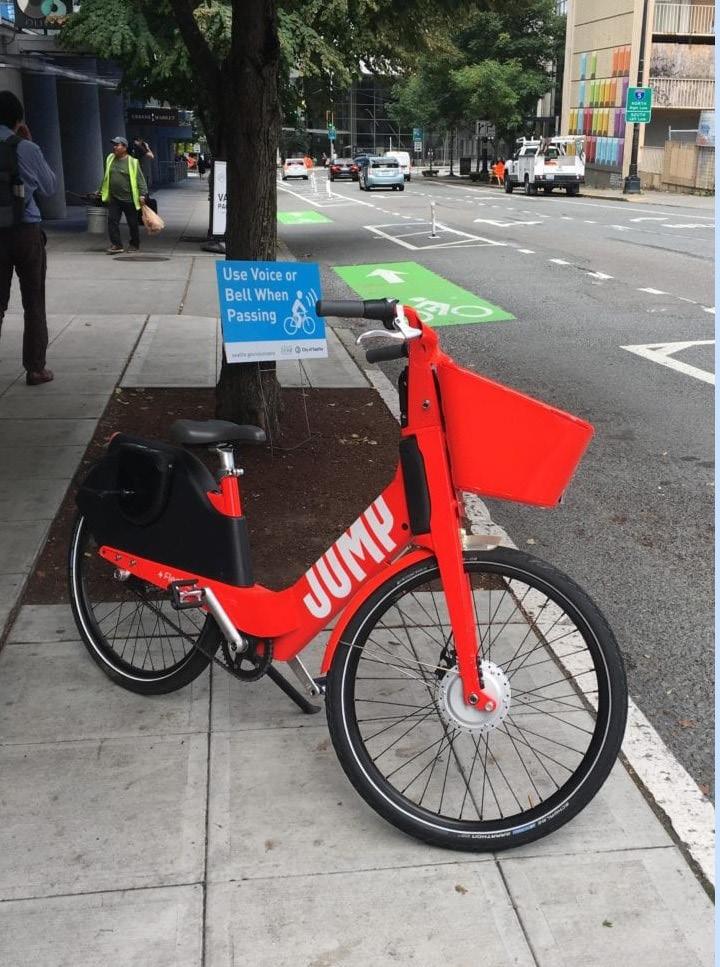HOW MANY PARTNERS DOES IT TAKE TO PLANT
1 MILLION TREES? It takes 548 trees a day to plant one million trees in five years—King County and their partners are on pace to meet and exceed that goal by the end of the year. BY CHRIS MANTEGNA AND KAITLAN HARBAUGH
In 2015, the King County Strategic Climate Action Plan (SCAP) set an ambitious goal: in just five years, one million trees would be planted throughout the county. The task was daunting, and was compounded by the fact that no initial internal funding existed and countless logistical challenges led to a delayed launch to the project. However, as of today, King County has planted 921,111 trees – an impressive 92% of their initial goal. This massive planting effort was ultimately successful because of strong community partners, many volunteers, and unwavering dedication from county employees. The 1 Million Tree initiative was motivated by mounting impacts of climate change in the Pacific Northwest. Carbon dioxide in the atmosphere is at an all-time high, and tree planting has been one of the main ways that cities and counties have been counteracting emissions. As trees grow, they remove the carbon dioxide out of the air and replace it with oxygen. This exchange of gases is especially critical in urban areas, which are hotspots for carbon emissions. Jessica Engel, the Program Director of 1 Million Trees, described the many challenges confronting the project when first launched. “Everyone was on board with it, but there was no money or staffing resources attached,” Engel shared. “We had some staff turnover and it ended up in my lap, and it was really more of a partnership building initiative than I would say anything else.” Forming partnerships quickly became the priority
and community pillars like The Nature Conservancy were crucial in convening resources to support the initiative. Although large community partners were major contributors to the program, its success was supported by every partner and volunteer that participated. Organizations such as Mountains to Sound Greenway, Forterra, and Vashon-Maury Island Land Trust all contributed funding and supported the planting of the trees; this was amplified by an overwhelming volunteer response. Engel emphasized that: “We really felt that every single tree that went into the ground, whether it was one from a city, or hundreds of thousands from a city, were really important and told the story of how trees are getting planted across our region.” Early press and site choice showcased larger partners because of their builtin volunteer bases, funding, and critical information on where trees could make the best impact. Those partners drove a surge in the number of volunteers in the Department of Natural Resources and Parks (DNRP) with the bulk of the early plantings done in established green spaces. Plantings were AS OF TODAY, KING COUNTY HAS PLANTED
921,111 TREES 92% OF THEIR INITIAL GOAL
completed in community parks and neighborhood spaces that needed refurbishment or replenishment, as well as new plantings in untouched areas. The immediate impact of planting
one million trees is difficult to measure when using such an informal process. There are a variety of partners working with King County that have agendas for their own success in tree planting, and a way to be mindful of their workload was to keep data reporting as informal and expeditious as possible. Engel didn’t want paperwork or reporting to be a burden or deal breaker for agencies and organizations. Every tree planted counts and keeping the participation barrier low meant smaller agencies could participate without overextending their staff or funds. Even though there isn’t a consensus on planting data, there are pockets of valuable qualitative data. Larger agencies, like University of Washington (UW) have dedicated units to proactively manage and track such information. Sara Shores, an Urban Forest Specialist with UW Campus Grounds Management, can not only show planting location, but tree species as well with the help of visual tracking tools. Student participants in the UW Society for Ecological Restoration were integral in getting the native tree species in the ground that contributed to King County’s count. Engel is the first to present learning opportunities as well as achievements from the last five years. Partnership building and strengthening have been successes to celebrate, with room for improvement in data collection, and strategy are also key players in developing the foundation being used as a template for the standalone forestry initiative, the 30-Year Forest Plan. Helmed by Kathleen Farley Wolf, the 30-Year ForFIELDNOTES / SPRING 2020 25








